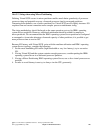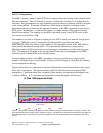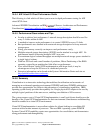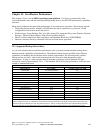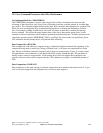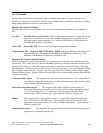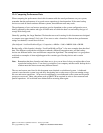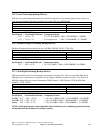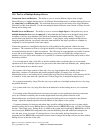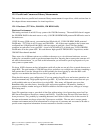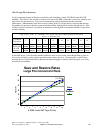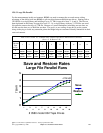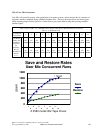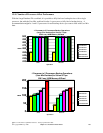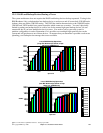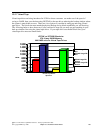
15.8 The Use of Multiple Backup Devices
Concurrent Saves and Restores - The ability to save or restore different objects from a single
library/directory to multiple backup devices or different libraries/directories to multiple backup devices at
the same time from different jobs. The workloads that were used for the testing were Large Database
File and User Mix from libraries. For the tests multiple identical libraries were created, a library for each
backup device being used.
Parallel Saves and Restores - The ability to save or restore a single object or library/directory across
multiple backup devices from the same job. Understand that the function was designed to help those
customers, with very large database files which are dominating the backup window. The goal is to
provide them with options to help reduce that window. Large objects, using multiple backup devices,
using the parallel function, can greatly reduce the time needed for the object operation to complete as
compared to a serial operation on the same object.
Concurrent operations to multiple backup devices will probably be the preferred solution for most
customers. The customers will have to weigh the benefits of using parallel verses concurrent operations
for multiple backup devices in their environment. The following are some thoughts on possible solutions
to save and restore situations. Remember that memory, processors and DASD play a large factor in
whether or not you will be able to make use of parallel or concurrent operations that can be used to affect
the back up window.
- For save and restore with a User Mix or small to medium object workloads, the use of concurrent
operations will allow multiple objects to be processed at the same time from different jobs, making better
use of the backup devices and the system.
- For systems with a large quantity of data and a few very large database files whether in libraries or
directories, a mixture of concurrent and parallel might be helpful. (Example: Save all of the
libraries/directories to one backup device, omitting the large files from the library or the directory the file
is located in. At the same time run a parallel save of those large files to multiple backup devices.)
- For systems dominated by Large Files the only way to make use of multiple backup devices is by using
the parallel function.
- For systems with a few very large files that can be balanced over the backup devices, use concurrent
saves.
- For backups where libraries/directories increase or decrease in size significantly throwing concurrent
saves out of balance constantly, the customer might benefit from the parallel function as the
libraries/directories would tend to be balanced against the backup devices no matter how the libraries
change. Again this depends upon the size and number of data objects on the system.
- Customers planning for future growth where they would be adding backup devices over time, might
benefit by being able to set up Backup Recovery Media Services (BRMS/400) using *AVAIL for backup
devices. Then when a new backup device is added to the system and recognized by BRMS/400 it will be
used, leaving the BRMS/400 configuration the same but benefiting from the additional backup device.
Also the same is true in reverse: If a backup device is lost, the weekly backup doesn't have to be
postponed and the BRMS/400 configuration doesn't need to change, the backup will just use the available
backup devices at the time of the save.
IBM i 6.1 Performance Capabilities Reference - January/April 2008
© Copyright IBM Corp. 2008 Chapter 15. Save/Restore Performance 248



